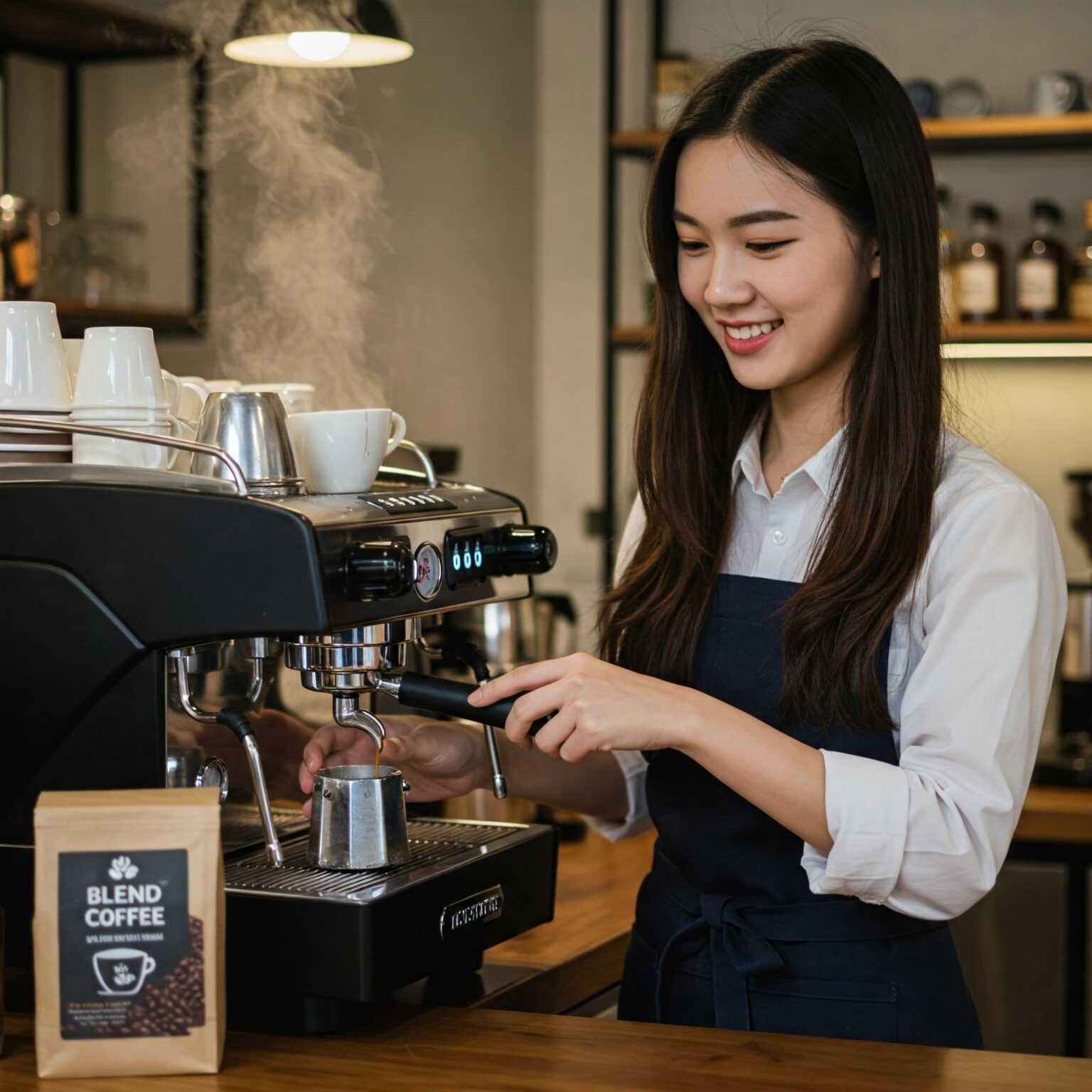Why SOE Single Origin Espresso Is Highly Rated Among Baristas
Coffee Beans Uncovered: Finding the Keys of Espresso and Blended Coffee Beans
When you believe regarding coffee, what comes to mind? Is it the rich aroma of espresso or the complexity of a well-crafted mix? Comprehending the subtleties of coffee beans can transform your experience.
The Beginnings of Espresso: A Historic Perspective
Although coffee is now a staple in coffee society worldwide, its origins map back to the early 20th century in Italy. You could be shocked to find out that the development of espresso was driven by a wish for rate and efficiency. In 1901, Luigi Bezzera patented the first coffee equipment, aiming to brew coffee faster than standard techniques. This innovation promptly caught the interest of Italian coffee enthusiasts, bring about the espresso bars we are familiar with today.
Comprehending Coffee Beans: Varieties and Features
When you consider coffee, it's important to recognize the different bean selections and their special tastes. Each kind brings a distinct personality to your mug, affected by variables like roast degrees. Understanding these components can elevate your coffee experience considerably.
Espresso Bean Varieties
As you explore the world of espresso, you'll promptly find that not all beans are created equivalent; each range brings its own unique flavors and features to your mug. The most preferred types include Arabica and Robusta. Arabica beans are understood for their smooth, nuanced flavors and reduced high levels of caffeine web content, making them a favorite amongst coffee lovers. On the various other hand, Robusta beans load a more powerful strike with greater high levels of caffeine and a much more bitter taste, often preferred in blends for their crema-enhancing qualities. You might likewise run into specialized beans like Liberica and Excelsa, which use distinct profiles and are less usual. Each range supplies something various, so experimenting will aid you find your best coffee.
Taste Profiles Described
Recognizing the flavor accounts of various espresso beans can raise your coffee experience. Each bean selection uses special qualities that influence mouthfeel, aroma, and taste. As an example, Arabica beans typically present a sweeter, more complex flavor with hints of fruit and floral notes, while Robusta beans tend to be bolder, with nutty and natural undertones.
When you explore single-origin beans, you may find unique regional flavors-- Main American beans may be intense and citrusy, whereas Italian blends frequently provide rich, chocolatey notes.
Roast Degrees Impact
Roast levels play an important duty in shaping the taste and fragrance of coffee beans, affecting your general coffee experience. Comprehending these roast levels assists you select the coffee that fits your preference preferences. Experimenting with various roasts can lead to wonderful discoveries, enhancing your recognition for espresso.
The Art of Mixing: What Makes Blended Coffee Unique
What makes blended coffee so remarkable? It's everything about the art of incorporating beans from various origins, roast levels, and flavor profiles. You're not simply mixing; you're creating an unified equilibrium that highlights the strengths of each bean when you mix. You can try out different mixes to enhance sweetness, body, and level of acidity, causing a mixture that's richer and extra complicated than a single-origin coffee.
Blending additionally permits you to cater to diverse preference choices. You can craft a blend that's mellow and smooth or one that's strong and durable, relying on your audience. And also, blending can aid maintain consistency, offering a reliable flavor experience despite seasonal variants in beans. So, whether you're a barista or a home maker, understanding the art of mixing opens a globe of imagination and taste opportunities, making your coffee experience absolutely special - SOE.
Flavor Profiles: Sampling Notes of Espresso vs. Blended Coffee
Combined coffee supplies a world of taste opportunities, yet when it comes to espresso, you're looking at a more focused experience. Espresso generally showcases strong, abundant flavors with a thicker mouthfeel.
On the various other hand, combined coffee offers a complex tapestry of tastes. You can discover a selection of sampling notes, from sweet and nutty to floral and fruity. Each mix can use something distinct, frequently integrating beans from various areas to develop a balanced profile.
While espresso provides a punch, combined coffee welcomes you to savor the nuances. Whether you like the durable toughness of coffee or the detailed flavors of combined coffee, each mug informs its own tale, awaiting you to uncover.
Developing Techniques: Refining Your Espresso Shot
To achieve the excellent espresso shot, comprehending the brewing strategies is important, as also small changes can significantly influence the flavor and high quality. Start by utilizing fresh, top notch coffee beans; grind them right before brewing for maximum flavor. Go for a fine work, concerning the uniformity of common salt, to guarantee suitable extraction.
Following, pay interest to your water temperature level; it must be in between 195 ° F to 205 ° F. Too as well chilly or warm can ruin your shot. Usage concerning 18-20 grams of coffee for a dual shot, and tamp it equally with strong pressure to produce an uniform puck.
Lastly, regulate your extraction time; aim for 25-30 secs. A longer removal can lead to bitterness, while as well brief can result in sour tastes. Exercise these methods constantly, and you'll refine your skills, accomplishing that abundant, full-bodied coffee shot you crave. Appreciate the journey!
The Function of Roast Degrees in Espresso and Blended Coffee
After grasping the developing methods for coffee, it's time to ponder how roast degrees affect the flavor account of your coffee. The roast degree can substantially alter your coffee's taste, aroma, and body. Light roasts have a tendency to highlight the coffee's origin, supplying intense acidity and fruity notes, while medium roasts balance acidity and sweet taste, developing a well-rounded taste. Dark roasts, on the other hand, highlight bold, rich flavors with lower acidity, often generating delicious chocolate or great smoky touches.

Checking Out Sustainability: Moral Sourcing of Coffee Beans
When you choose coffee, you're not simply picking a flavor; you're making an option regarding the effect on farmers and the setting. Comprehending Fair Trade methods, natural farming approaches, and accreditation standards can assist you sustain lasting coffee sourcing. Allow's discover just how these aspects add to a much more honest coffee experience.
Fair Trade Practices
Fair Trade techniques play a vital role in guaranteeing that coffee beans are sourced fairly and sustainably. When you choose Fair Trade coffee, you support farmers that receive fair earnings and job in risk-free conditions. By opting for Fair Profession brands, you're not simply appreciating an abundant cup of coffee; you're making a favorable influence on the lives of those that grow it.
Chemical-free Farming Methods
As you explore the globe of ethical coffee sourcing, chemical-free farming techniques arise as an important part of sustainability. By choosing organic coffee, you sustain practices that prioritize dirt health and wellness, biodiversity, and natural communities. Farmers prevent artificial chemicals and fertilizers, depending instead on all-natural garden compost and crop rotation to boost dirt fertility. This not just safeguards the environment however additionally boosts the quality of the coffee you delight in. Natural farming motivates local wildlife and advertises a well balanced ecosystem, lowering the possibilities of condition and bugs. Additionally, it frequently results in stronger, healthier coffee plants, leading to richer flavors in your mug. You're making a mindful choice that profits both the earth and your palate. when you choose for natural coffee.
Qualification Specifications Explained
Understanding accreditation criteria is necessary for anyone thinking about ethically sourced coffee. These requirements, such as Fair Profession, Rainforest Alliance, and USDA Organic, assurance that coffee is expanded under sustainable methods. When you pick certified coffee, you sustain farmers that abide by honest labor techniques and environmental management.
Fair Trade certification concentrates on providing fair wages and functioning problems, while Jungle Partnership highlights biodiversity and community conservation. USDA Organic assures that no synthetic plant foods or pesticides are used. By acquainting yourself with these certifications, you can make educated options that straighten with your worths. Following time you go to your neighborhood café or supermarket, try to find these tags, and really feel excellent knowing your coffee purchase positively affects areas and the setting.
Often Asked Concerns


How Does Elevation Impact the Growth of Coffee Beans?
Altitude influences coffee bean development by affecting temperature level and climate. Higher altitudes frequently produce denser beans with more facility tastes, look at this website while reduced altitudes can cause faster development but much less delicious outcomes. You'll taste the distinction!
What's the Difference In Between Arabica and Robusta Beans?
Arabica beans are sweeter and much more complex, while Robusta beans have a more powerful, harsher flavor with greater caffeine web content. You'll find Arabica favored for specialized coffees, whereas Robusta's typically used in instantaneous coffee and espresso blends.
Can Coffee Beans Spoil or Lose Flavor Over Time?
Yes, coffee beans can go poor and shed flavor gradually. They'll become stale if you store them poorly or keep them as well long. Constantly keep your beans in a closed container far from light and moisture.
What Are the Health And Wellness Benefits of Drinking Coffee?
Consuming alcohol espresso increases your power, improves mental clarity, and might lower the danger of certain conditions. It's abundant in anti-oxidants, sustains metabolic rate, and can boost mood, making it a useful selection for your day-to-day routine.
Exactly How Does Water Top Quality Impact Espresso Extraction?
Water high quality greatly impacts espresso extraction. It impacts the solubility of oils and tastes, affecting Recommended Reading preference and aroma. Using filtered water can improve your coffee, guaranteeing a well balanced and delightful mug whenever you brew.
Coffee Beans Uncovered: Discovering the Keys of Coffee and Blended Coffee Beans.
Recognizing the taste accounts of various espresso beans can raise your coffee experience.Roast levels play a crucial duty in forming the taste and fragrance of coffee beans, affecting your total coffee experience (SOE).Combined coffee supplies a globe of taste opportunities, however when it comes to espresso, you're looking at a much more concentrated experience.After grasping the brewing techniques for espresso, it's time to contemplate how roast degrees affect the taste profile of your coffee